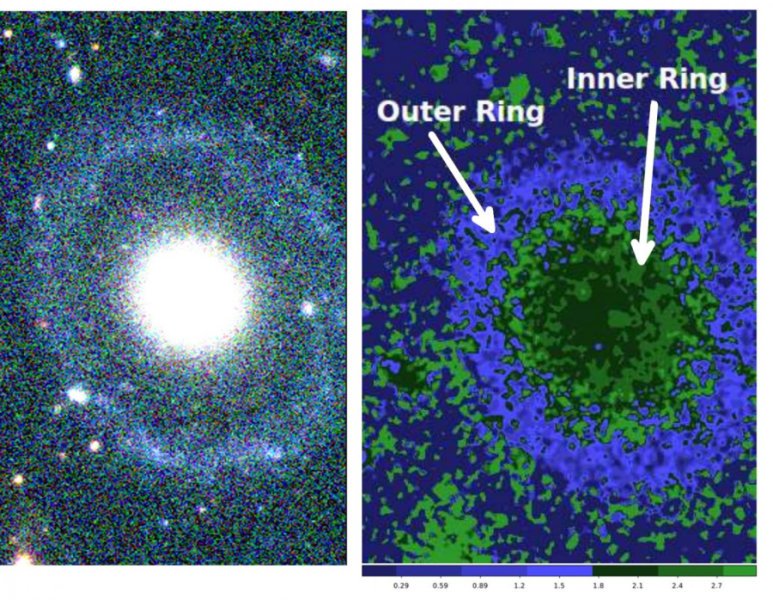Astronomers in the US have discovered a new and extremely unusual galaxy that will possibly teach us more about the evolution of the universe.

Some cosmic perspective for you: Galaxies are huge, our galaxy, the Milky Way consists of hundreds of billions of stars, and the universe consists of hundreds of billions of galaxies.
Since everything in the universe is in constant motion, galaxies included, they affect each other, and sometimes collide and merge. Most galaxies are either elliptical or disk-shaped, so-called spiral galaxies, such as our own Milky Way Galaxy.
A newly discovered galaxy, yet unnamed, is something else. It has a round core and two disk-shaped rings around it. This type of galaxy is called a Hoag’s Object, named after Arthur Hoag who discovered it in 1950. Hoag’s Objects are very rare, and it is estimated that less than 0.1 percent of all observed galaxies are of this type.
But even rarer, it seems as if there is a clear division within the galaxy. The center is full of over ten billion years old stars from the early beginning of the universe. Around these very old stars is a ring consisting of a large number of young stars.
The astronomers believe that this unusual galaxy is a result of collisions of two or more galaxies, a random event that spawned something very unique.
The new galaxy is found 359 million light years from Earth.
Reference:
Burcin Mutlu Pakdil et al. “A photometric study of the peculiar and potentially double ringed, nonbarred galaxy: PGC 1000714“, Monthly Notices of the Royal Astronomical Society, DOI: 10.1093/mnras/stw3107.






















